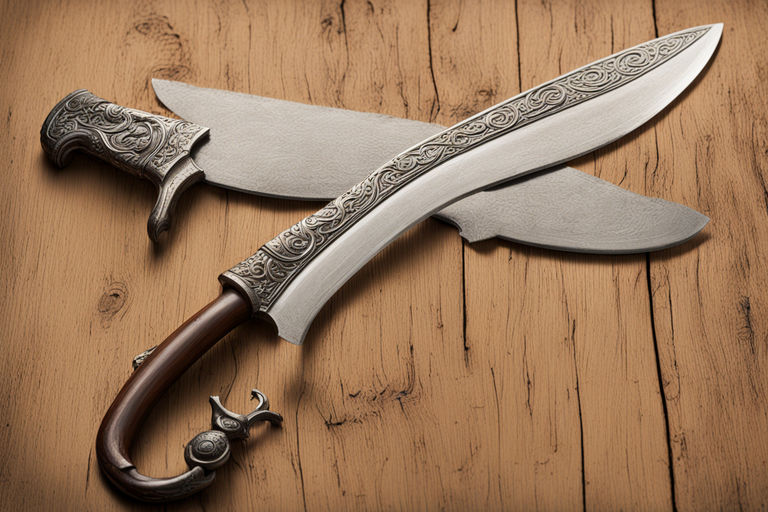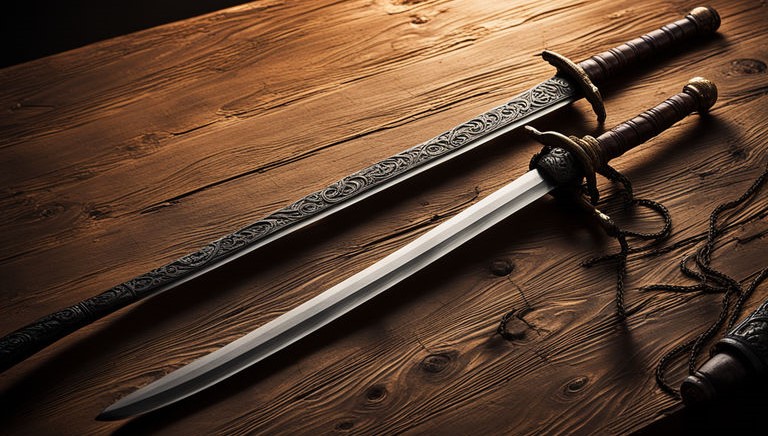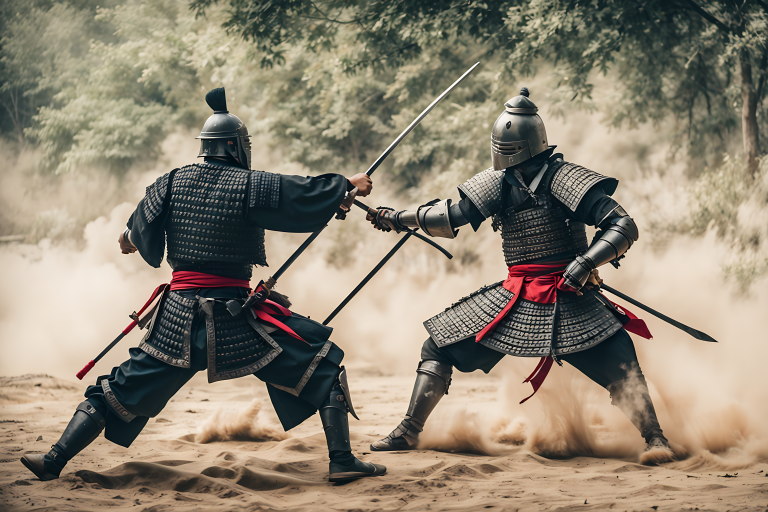Overview
This article explores the truth behind katana sharpness. It clarifies misconceptions about its cutting power and explains what a katana can realistically cut through. It also dives into the factors that influence katana sharpness, including blade design, steel type, and sharpening techniques. Finally, it details methods for testing katana sharpness.
Discover the fantastic sharpness of the katana, the amazing Japanese sword that has caught minds for quite a long time. While certain accounts might exaggerate its cutting power, the katana is to be sure a formidable blade when used handily.
In this article, we’ll investigate the reality behind katana sharpness, exposing myths and shedding light on its genuine capabilities. We’ll start by recognizing sharp and dull katanas, investigating what each can accomplish. Then, at that point, we’ll dive into what makes a katana outstandingly sharp and how to evaluate its sharpness.
Reveal the secrets of this notorious blade and discover what separates it from the rest.
When it comes to katana swords, there’s a clear difference between sharp and blunt versions.
- Sharp Katanas:
Skilled polishers dating back to the Kamakura period hone a sharpened katana, known as a shinken or real sword in Japanese, to perfection. They sharpen these blades to be razor-sharp from hilt to tip and use them for cutting practice against various targets like bamboo or tatami mats. Historically, samurai relied on sharp katanas in battle and daily life. - Blunt Katanas:
On the other hand, a blunted katana goes by names like Iaito, mogito, or mozoto, meaning practice sword or imitation sword. Typically, craftsmen in Japan make these versions from aluminum zinc alloy, while outside Japan, alternative materials like carbon or stainless steel are used. Blunt katanas find use in disciplines like Iaido, a Japanese blade art focused on technique rather than cutting, as well as in activities such as larping, cosplay, and decoration.
Understanding the distinction between sharp and blunt katanas is essential for practitioners and enthusiasts alike, as each serves a distinct purpose in the world of swordsmanship and martial arts.
Sharpening the katana can greatly enhance its cutting ability, allowing it to effortlessly slice through various targets with a single stroke. However, excessive sharpness, akin to a razor’s edge, and use on hard surfaces can diminish its effectiveness over time.
Let’s explore what a katana can and cannot cut through:
- Humans: While samurai tales suggest the katana could slice a human in half, modern tests support this claim, with records of up to seven bodies cut simultaneously under specific conditions.
- Bamboo: Like human bones, stiff bamboo can be easily cut by a katana.
- Tatami mats: Popular modern targets in tameshigiri, wet rice straw mats are effortlessly sliced through by a katana.
- Plastic bottles and cans: Water-filled containers are common backyard targets easily cut by a katana.
- Wooden logs: Depending on the blade’s steel, a katana can cut through wooden logs.
- Armor: The katana’s design prioritizes proper cutting technique over brute force, making it less suitable for cutting heavy armor.
- Metal: While it may cut thin metal layers, doing so risks damaging the blade irreparably.
- Stone: While smaller stones may crack, attempting to cut them with a katana risks breaking or damaging the sword.
Understanding the katana’s capabilities is essential for appreciating its historical significance and martial prowess without falling prey to exaggerated claims.

The katana excels in sharpness due to several key features. Its single-edged blade, with a pronounced taper and bevel, combined with a larger handle and shorter blade, facilitates superior edge alignment on targets compared to other swords.
Throughout history and today, various types of katana exist, each with its own characteristics. Some katana swords boast sharper edges and better edge retention, influenced by factors like design nuances and craftsmanship techniques.
Understanding these distinctions sheds light on the katana’s enduring reputation for sharpness, making it a standout among swords of the world.

Current carbon prepares like 1060 or 1095 deal amazing sharpness and edge maintenance capabilities. Nonetheless, katanas produced using 5160 spring steel and L6 instrument steel are famous for accomplishing the most significant levels of wear obstruction and holding an extremely sharp edge for longer periods.
Past the sort of steel utilized, the ability of the bladesmith and the accuracy of the intensity therapy process assume critical parts in deciding the last sharpness and toughness of the katana blade. Via cautiously choosing the right steel and applying master craftsmanship, bladesmiths can make katanas that succeed in both sharpness and edge maintenance, satisfying the requests of knowing experts and devotees the same.

Several zukuri types exist, including the popular shinogi-zukuri, hira-zukuri, and shobu-zukuri. These shapes differ in blade curvature, width, thickness, and the angle of the bevel toward the edge. A katana’s edge sharpness is greatly influenced by the amount of bevel and taper it possesses, with more polished edges resulting in sharper blades
However, many katanas don’t feature heavily tapered blades because increased sharpness often comes at the expense of the niku, or spine thickness. The niku provides the blade with structural integrity, reducing the risk of breakage during combat.
Understanding the interplay between blade shape, sharpness, and structural resilience is key to appreciating the versatility and craftsmanship of katana swords.

Excelling at katana honing requires accuracy, persistence, and a profound comprehension of the sharp edge’s life structures. It’s a demonstration of the devotion and skill expected to keep up with the katana’s unbelievable cutting ability.

Today, katana sharpness is evaluated through less gruesome methods. Popular options include the paper-cut test, shaving test on body hair, modern tameshigiri practice using tatami mats, or utilizing a BESS tester.
These tests gauge the katana’s ability to cut cleanly and efficiently, ensuring it meets the standards set by the bladesmith and is ready to perform its intended function.




